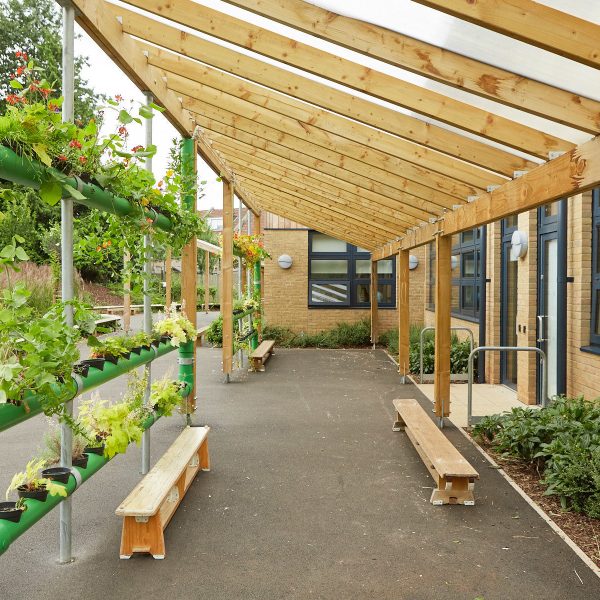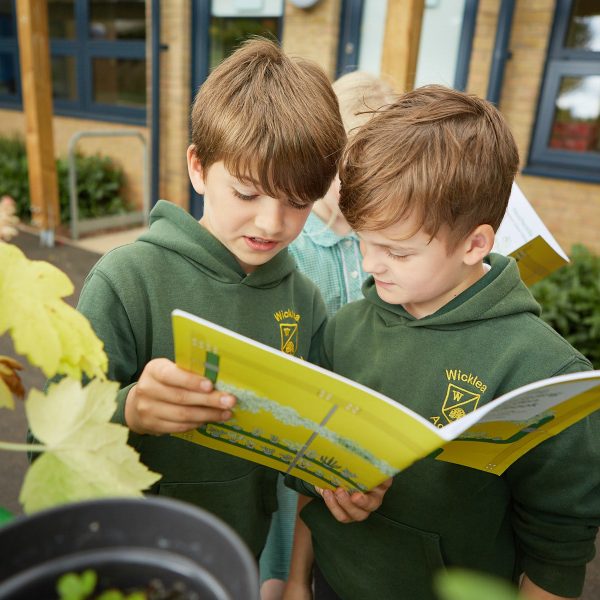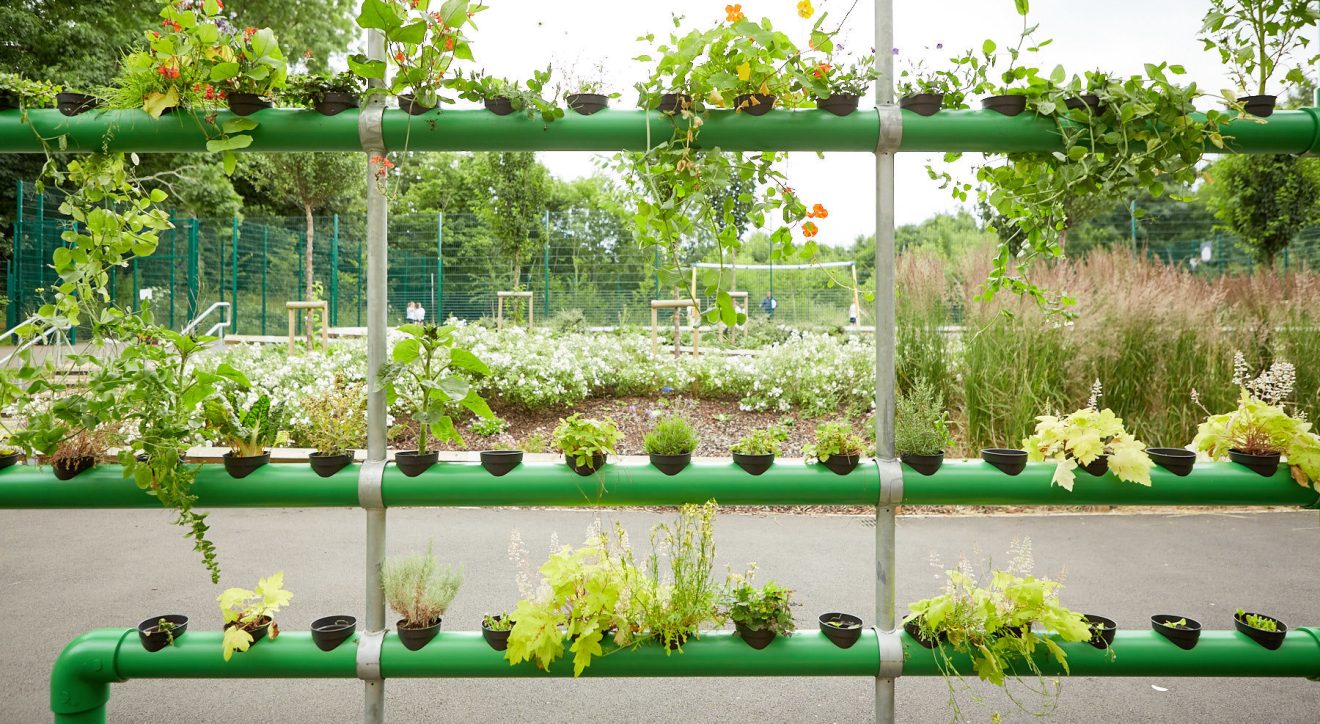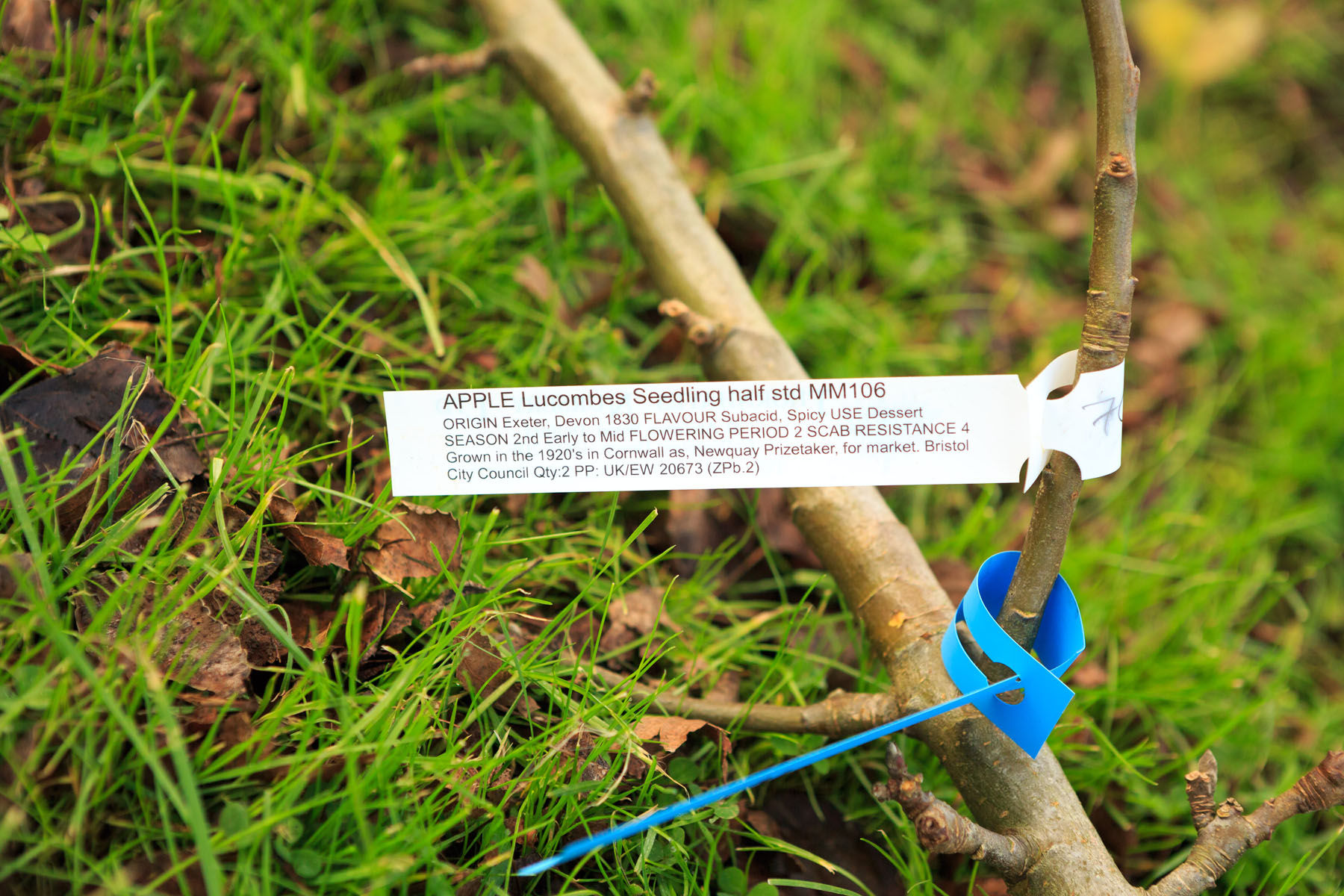
Synopsis
The redevelopment of St Anne’s Infant and Junior School is part of Bristol City Council’s Primary/Bristol series of artist commissions for primary schools commissioned as part of the Primary Capital Education Programme. As part of the development, Bristol based duo Eudaimon were commissioned in spring 2013 to develop a new public art work for the school working closely with pupils, teaching staff and Head Teachers.
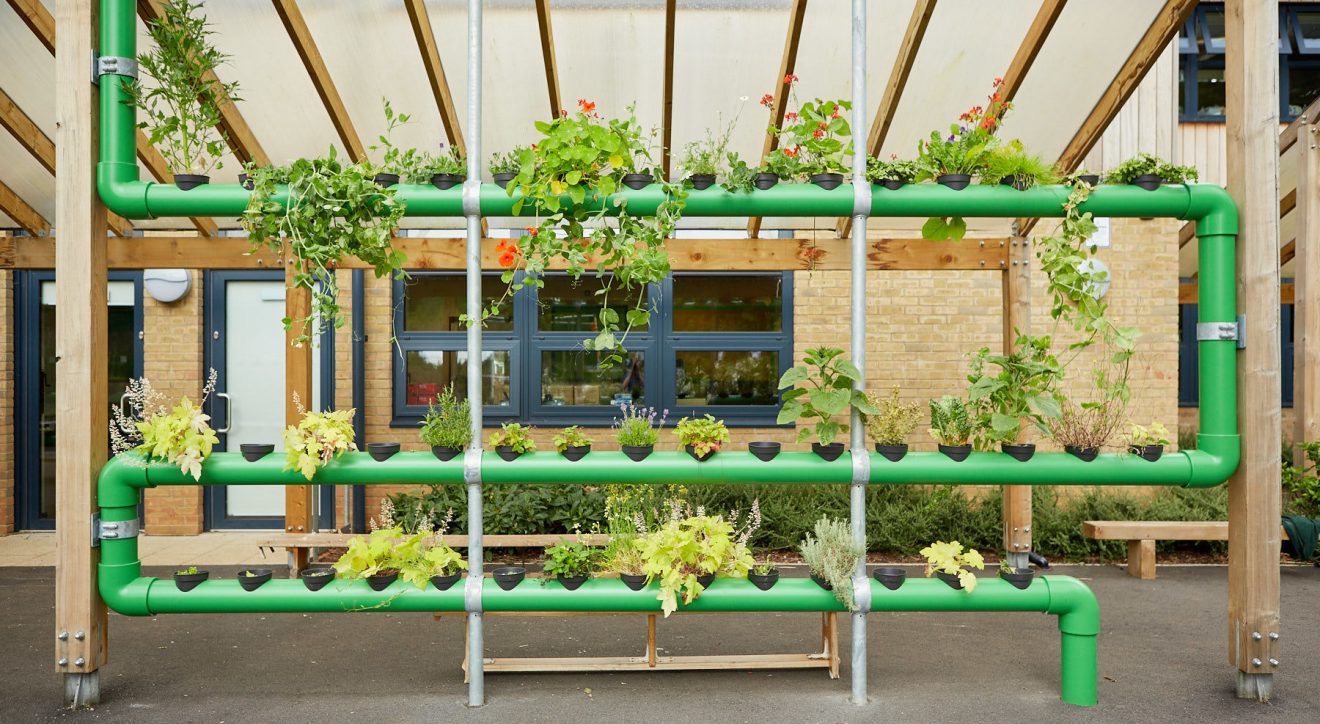

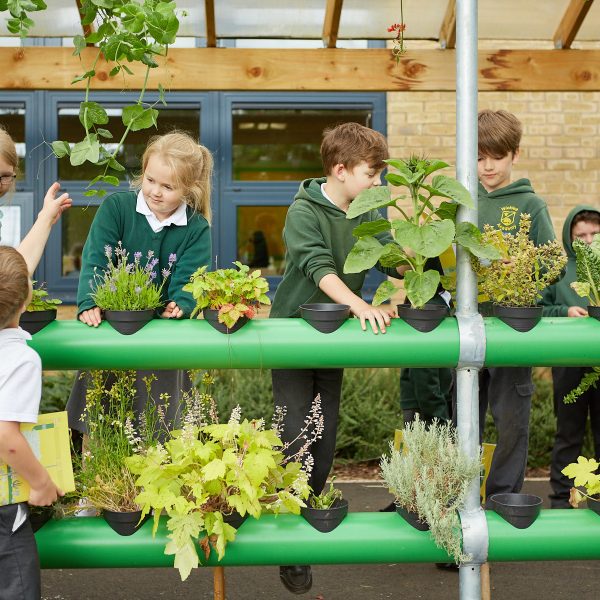
Eudaimon’s approach to urban design is based upon three central ideas (1) ecology, (2) a contemporary interpretation of the philosophical concept of eudaimonia & (3) urban acupuncture. These ideas are employed to balance human tendencies toward technological interventions whilst creating a sustainable ecology in the city. Eudaimon’s aim is to create works that invite people to enjoy and engage in a space that contains subtle layers of meaning that ultimately leaves one feeling uplifted
For the St Anne’s commission, Eudaimon created ‘The Cascading Garden’ an artwork that exists at both St Anne’s infants at Bloomfield Road and Junior school at Lichfield Road. The work comprises of an exterior planting systems integrated into the architecture of the schools exterior spaces. Zigzag in form these hydroponic structures are made up of horizontal and vertical cylinders which are interspersed with a series of circular holes for plant pots in which plants can be grown. Much like a marble-run game, pupils are be able to sow seeds up and down the structure, watching the growth of plants and the resultant changes to the sculptural form.
The cascading garden is watered by a sub-irrigation system that is controlled by ‘float switches’. When the water level in the system is too low or too high the switches triggers an electrical current to tell the solenoid valve to release more water into the system or to stop the flow of water. The plants in the system are able to access water whenever it is needed by Capillary Action through a wick at the base of each pot that is immersed in water, allowing the plants to absorb water when they need it.
In developing their work Eudaimon worked closely with St Anne’s school to look at ways the project could cross over with the curriculum, especially Forest School, and integrating a series of gardening workshops for pupils. This was further developed through the creation of a publication ‘The Cascading Garden Handbook: A Guide to Growing Plants at St Anne’s Infant School and Wicklea Academy’ which was published as part of the project to instruct pupils and teachers on the use of the planting system and the different types of species of plants that would be best suited, with a focus on herbs and aromatics, and fruit plants. The book also includes a section at the rear for children to make drawings and notes around the project.
The publication can be downloaded in the link section on this page.
This project has been made possible through funding from Bristol City Council as part of the Primary Capital Education Programme.
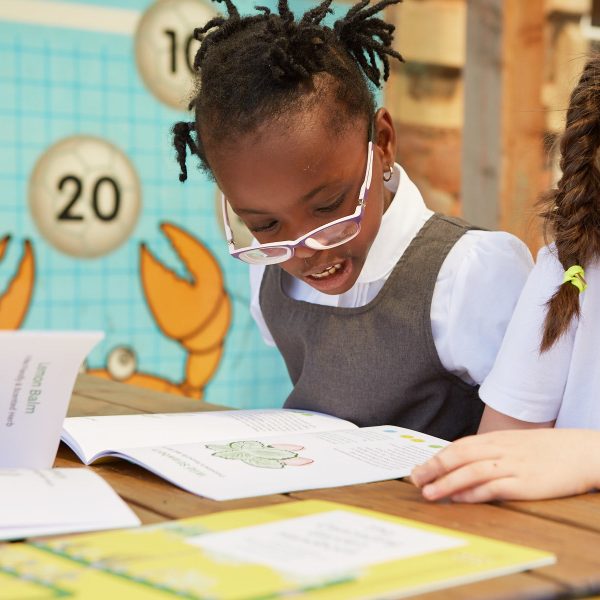
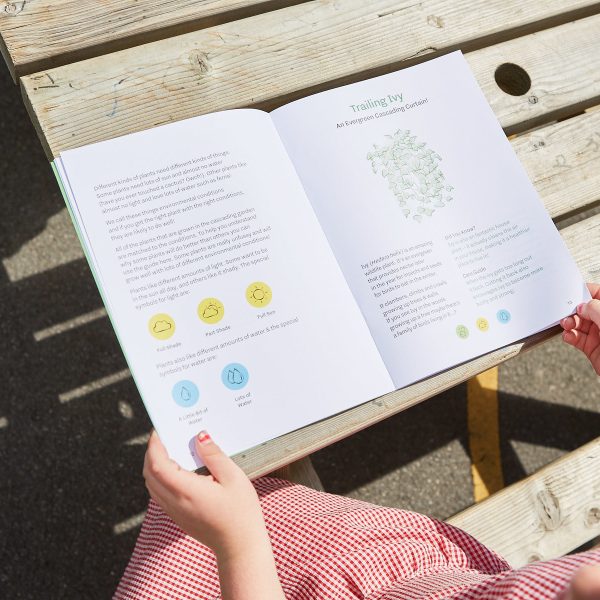
Eudaimon’s urban design practice was founded in 2009, in Bristol, by brothers Jak and Robert Ollett. Their name hints at their background roots and reveals their design practice vision: to inspire flourishing and balanced living through design.
Their works are an exploration of the theme of nature and sustainability in the built environment. Their world is one in which the questions that they are posed are philosophically investigated and often answered with practical and unusual responses. The results are works of functional environmental art that reference and expose the underlying processes and materials that contribute to the world as we experience it. Their aim is to create works that invite people to enjoy and engage in a space that contains subtle layers of meaning which ultimately leaves one feeling uplifted. www.eudaimon.co.uk
Their project portfolio includes: ‘Seeds of Change: Floating Ballast Seed Garden’ (Arnolfini + Bristol City Council 2012), ‘Hidden Realms’ (The National Trust 2012), ’59-61 Whiteladies Road: Be.in Bristol’ (Be.in Ltd. 2013).
Arnolfini is one of Europe’s leading independent, contemporary arts organizations, and is the flagship art centre for the South West of England with 450,000 visitors annually. 2011 is the year of Arnolfini’s 50th anniversary. Since its foundation in 1961, Arnolfini has built an international reputation for commissioning and presenting innovative, experimental work in the visual arts, always with a strong emphasis upon audience engagement. Many thousands of artists and performers have been involved with Arnolfini during this time, often gaining their first opportunity before going on to long-term success, and this wealth of creativity has been appreciated and enjoyed by consistently large audiences. Much of this groundbreaking work would not have been made or shown in Bristol and the South West region without the Arnolfini. Previous major solo exhibitions at Arnolfini have included: Marcel Broodthaers, Bridget Riley, Richard Long and Liam Gillick, as well as more recently Cosima von Bonin in 2011.
http://www.stannesinfants.co.uk/

